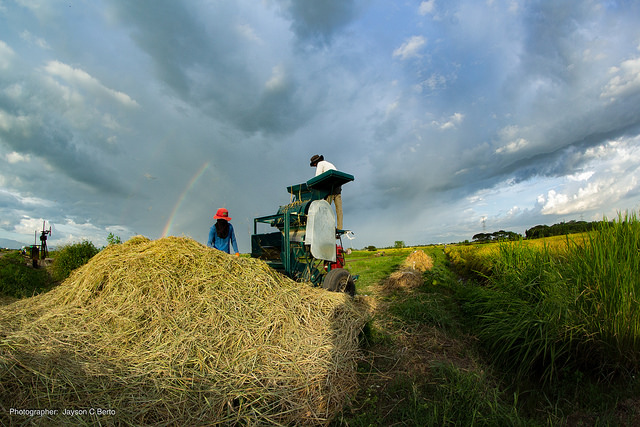 Experts at the Philippine Rice Research Institute (PhilRice) urge farmers not to burn rice straws, locally known as dayami, for environmental and economic reasons.
Experts at the Philippine Rice Research Institute (PhilRice) urge farmers not to burn rice straws, locally known as dayami, for environmental and economic reasons.
Burning of rice straws, generally practiced during the harvest season, causes air pollutants such as carbon dioxide, carbon monoxide, nitrogen oxide, and sulphur dioxide. If continually done, it will decrease soil’s nitrogen, 25% of phosphorus, 20% of potassium, and 5-60% of sulfur.
The practice also damages food resources of beneficial insects in the rice field.
The Solid Waste Management Act (RA 9003) and Philippine Clean Air Act of 1999 prohibit open-field burning, including burning of rice straws.
Alternatives
Our country produces 15.2M tons of rice that leave 11.3M tons of rice straw every year. To minimize postharvest waste, rice straws can be used by farmers as organic fertilizer and primary material for mushroom production.
According to experts, rice straw and other biomass from farm by-products can help farmers save expenses from chemical fertilizer inputs. Recycling farm wastes can also keep their environment clean and free of pollutants.
“When straws are scattered in the field during land preparation, they maintain soil’s nutrients and moisture,” said Evelyn J. Javier, supervising science research specialist of Agronomy, Soil, and Plant Physiology Division (ASPPD).
Javier added that every 5 tons of rice straws can increase soil’s nutrients such as nitrogen, phosphorus, potassium, sulfur, silicon, and carbon. They also preserve the biodiversity of microorganisms that helps in nutrient cycling and efficient fertilizer utilization.
Rice straws can also be used as mulch to protect the roots of the plants from heat and cold and reduce the evaporation rate. They also prevent weeds to grow in the paddy field.
Meanwhile, Rizal G. Corales of PhilRice’s Palayamanan Plus recommended the use of rice straws as substrate for oyster mushroom (Pleurotus spp.) production.
“Bulk of the rice biomass produced is still being disposed indiscriminately despite its many known uses. Using rice straw as mushroom substrate is economically profitable for farmers and people engaged in agribusiness,” Corales said.
“The waste from mushroom production is also the main substrate for vermicomposting, one of the best organic fertilizers produced,” Corales added.




